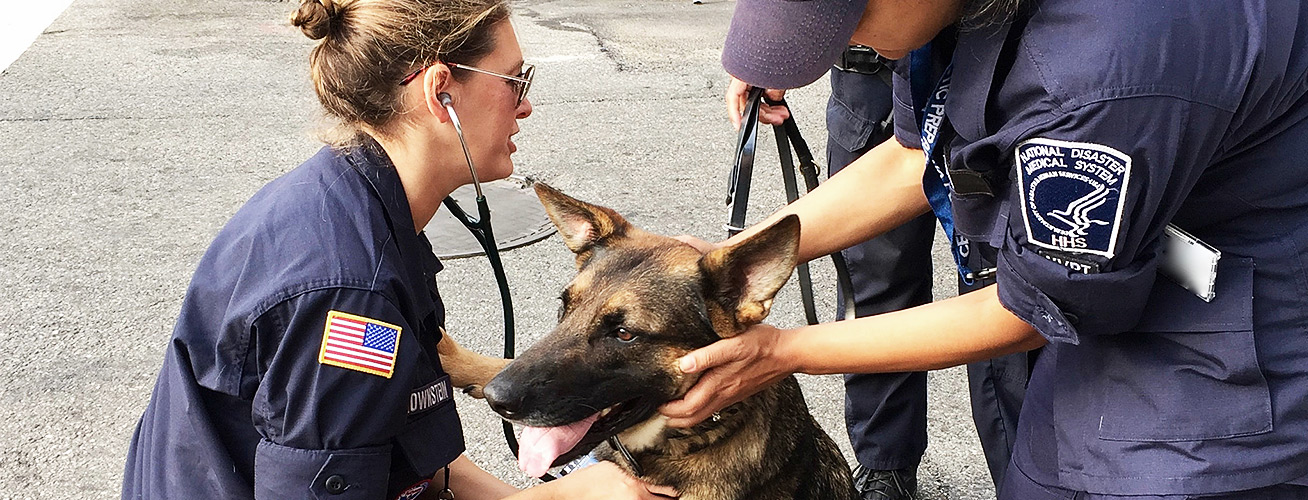National Veterinary Response Teams
National Disaster Medical System
Disasters threaten health – for both humans and animals. National Veterinary Response Teams (NVRTs) provide expert veterinary care, treating ill or injured pets, companion animals, service animals, working animals (including security animals), laboratory animals, and livestock impacted by natural and technological disasters, acts of terrorism, disease outbreaks, and during certain national special security events. NVRT team members appreciate that animals are integral to communities as they respond to and recover from a disaster.

NVRT team members include:
- Veterinarians
- Animal health technicians
- Epidemiologists
- Safety specialists
- Logisticians
- Communications specialists
NVRTs are made up of modular teams, deploying only those people and assets needed to help the impacted community. Teams include small animal medical treatment task force, large animal medical treatment task force, working dog treatment task force, and customizable multi-squad treatment teams.
NVRT Capabilities
Animal health and human health are intertwined. From disasters to large events, NVRTs may be called on to provide a wide range of services, such as:
-
Assessing the veterinary medical needs of animals and communities. Evaluating animal health, behavior, and well-being on the general animal population and how that evaluation impacts the community.
-
Providing medical treatment to ill, injured, and sheltered animals. Evaluating and treating animals an individual basis.
-
Providing veterinary medical support to working animals which might include search and rescue dogs and animals used for law enforcement. Assessing the health, behavior, and well-being of working animals and determining if they are fit to continue their support roles or need specific treatment.
-
Stabilizing animals for evacuation. Making sure that animals targeted for removal from the disaster scene are appropriately assessed and treated for transportation.
-
Assessing environmental and zoonotic diseases. Determining the potential community impact of potential or identified animal diseases.
-
Conducting veterinary health screening at airports or other points of embarkation and debarkation. Assessment of animals entering or leaving a disaster site to make sure they are healthy enough to travel and will not carry infections that can impact the animal population at their destination.
-
Providing veterinary support to other deployed NDMS teams. Helping other NDMS teams deal with animal-related situations from pet relocation to livestock treatment to animal evacuation.

